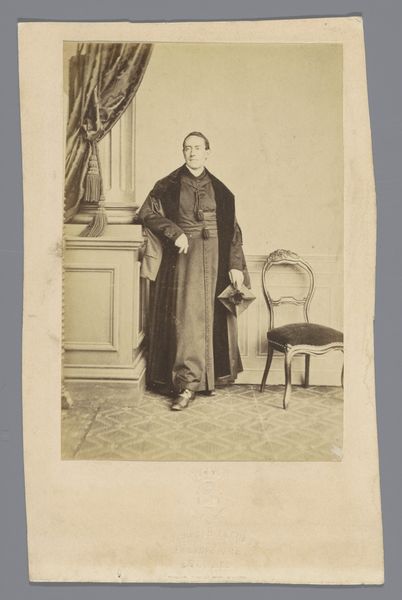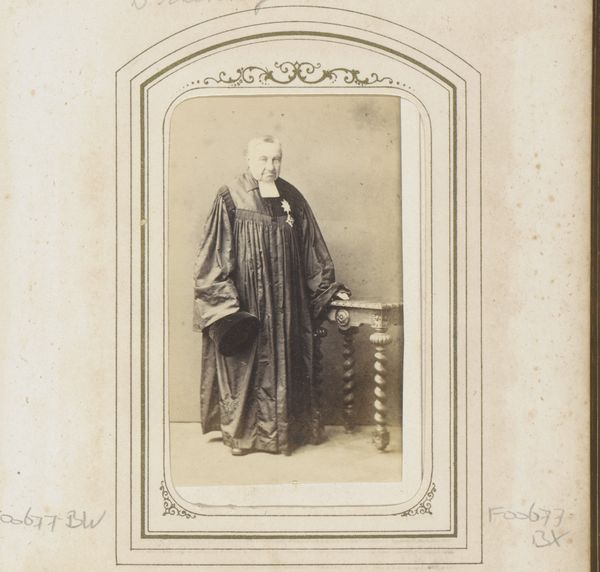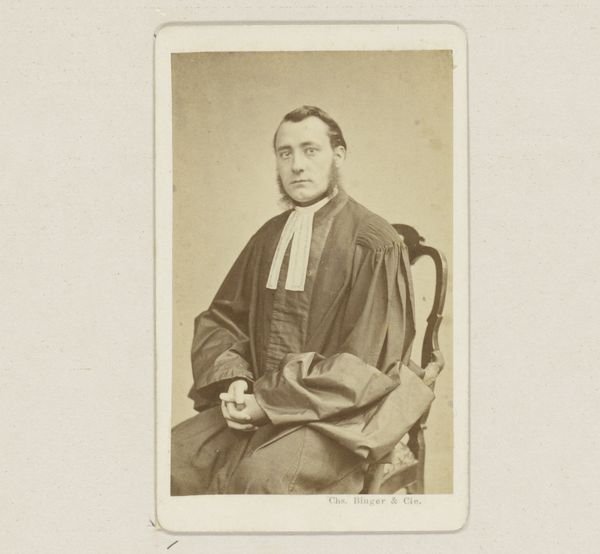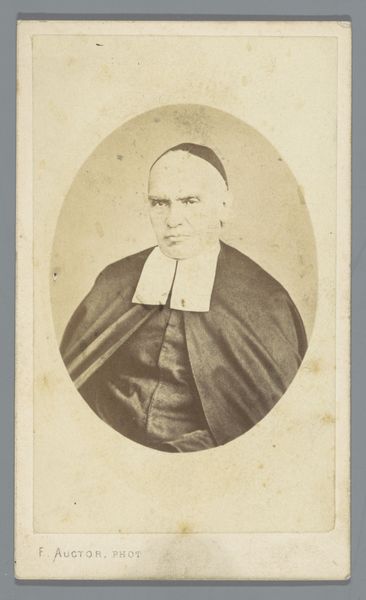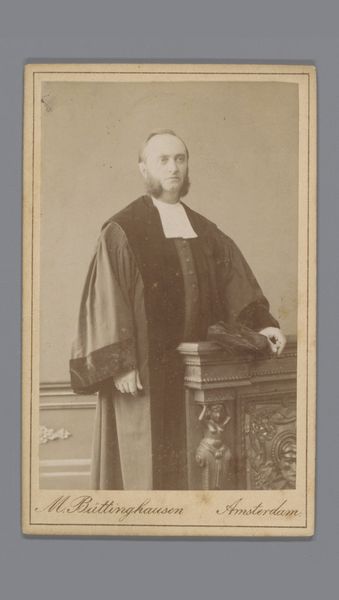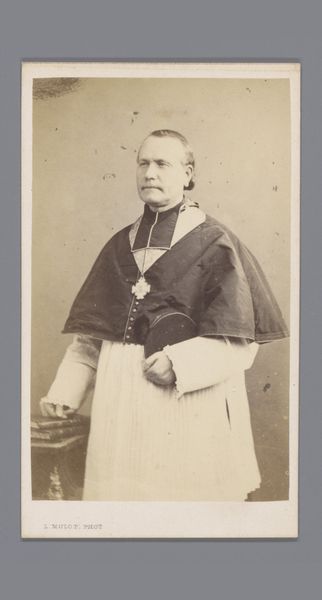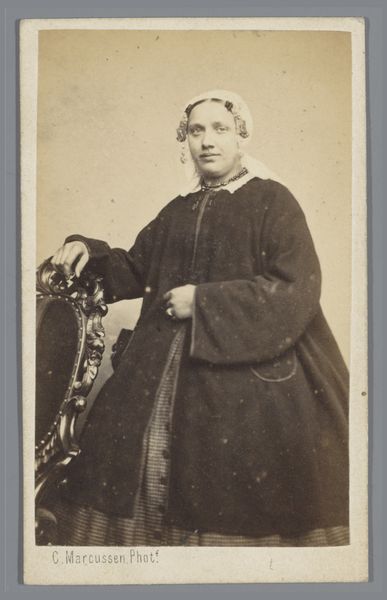
photography, gelatin-silver-print
#
portrait
#
photography
#
gelatin-silver-print
#
realism
Dimensions: height 102 mm, width 66 mm
Copyright: Rijks Museum: Open Domain
This photograph of an unknown clergyman was created by Franz Weisbrod sometime before his death in 1873. The photograph is a salt print, one of the earliest photographic processes using paper coated with a silver nitrate solution, then exposed to light through a negative. The materiality of early photography had everything to do with the rise of industrial capitalism. The paper for salt prints was mass-produced and readily available. The chemical process required specific knowledge, but also relied on the reproducible effects of light and chemical reactions. In early photography, labor was divided between those who made the materials and those who operated the cameras. Ultimately, the photograph democratized portraiture. Previously only available to the wealthy via painting, photography allowed the emerging middle classes to document their existence and participate in visual culture. This is particularly true for men like the clergyman pictured here, who made his living through the modernizing forces of religion. Paying attention to the materials and modes of production in which an artwork like this was created allows us to consider the wide-reaching social and economic shifts of the time.
Comments
No comments
Be the first to comment and join the conversation on the ultimate creative platform.

